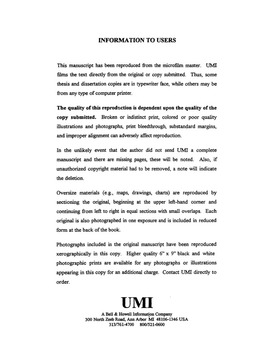| dc.contributor.advisor | Roegiers, Jean-Claude, | en_US |
| dc.contributor.author | Li, Xu. | en_US |
| dc.date.accessioned | 2013-08-16T12:30:24Z | |
| dc.date.available | 2013-08-16T12:30:24Z | |
| dc.date.issued | 1998 | en_US |
| dc.identifier.uri | https://hdl.handle.net/11244/5750 | |
| dc.description.abstract | In the theoretical development part, a set of fully-coupled thermoporoelastic governing equations were proposed and some drawbacks in an existing model discussed. Formulae for stress- and temperature-dependent thermoporoelastic parameters were derived based on the micromechanical model of volumetric response; non-linear behavior for some thermoelastic and thermodynamics properties were reviewed. | en_US |
| dc.description.abstract | In the application part, the basic mechanisms of coupled thermoporoelastic processes influencing borehole stability were thoroughly investigated through a diagnostic example. In addition, the potential impacts of non-isothermal drilling on the stability of boreholes subjected to arbitrary stress field were illustrated through two application examples. The results from these examples have shown that heating the borehole can significantly increase the potential of near-wellbore shear failure at early times. Heating also imposes a high potential of borehole spalling. On the other hand, cooling the borehole tends to stabilize the borehole at the beginning of the drilling; but with time, it could induce time-delayed lost circulation, wellbore spalling, and passive and active shear failures, especially when the cooling effects is combined with the high mud weight. (Abstract shortened by UMI.) | en_US |
| dc.description.abstract | This dissertation systematically investigated the impact of non-isothermal drilling on borehole stability for boreholes drilled in fluid-saturated porous formations, and subjected to an arbitrarily oriented stress field. Emphasis was put on the analyses of problems occurring in shales, i.e., the thermal diffusivity is generally greater than the fluid diffusivity; and conductive, rather than convective, heat transfer dominates the temperature diffusion process. The thermal-hydraulic-mechanical (THM), or thermoporomechanical processes discussed in this dissertation are fully-coupled. | en_US |
| dc.description.abstract | In the model development part, thermoporoelastic analytical solutions, including the general solution for axisymmetric loading condition; dimensionless solutions for some extreme boundary conditions; the solution for a borehole subjected to non-hydrostatic far-field loading; and solution for inclined boreholes, were derived. These models furthered the current technologies in this field by taking into account the complete THM coupling mechanism and arbitrary borehole orientations with respect to the in-situ stress field. A finite element model which is capable of simulating the behaviors of highly non-linear and quasi-static thermoporoelasto-plastic systems was also developed. This is an entirely new application attempts in the area of fully-coupled THM modelling. | en_US |
| dc.format.extent | xix, 192 leaves : | en_US |
| dc.subject | Oil well drilling. | en_US |
| dc.subject | Boring. | en_US |
| dc.subject | Thermoelasticity. | en_US |
| dc.subject | Engineering, Petroleum. | en_US |
| dc.subject | Gas well drilling. | en_US |
| dc.title | Thermoporomechanical modelling of inclined boreholes. | en_US |
| dc.type | Thesis | en_US |
| dc.thesis.degree | Ph.D. | en_US |
| dc.thesis.degreeDiscipline | Mewbourne School of Petroleum and Geological Engineering | en_US |
| dc.note | Source: Dissertation Abstracts International, Volume: 59-12, Section: B, page: 6475. | en_US |
| dc.note | Adviser: Jean-Claude Roegiers. | en_US |
| ou.identifier | (UMI)AAI9914403 | en_US |
| ou.group | Mewbourne College of Earth and Energy::Mewbourne School of Petroleum and Geological Engineering | |
